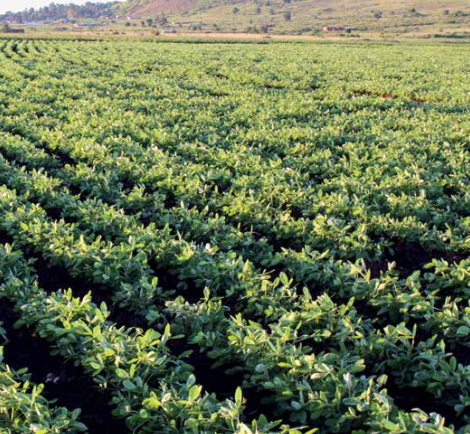Speeches Shim

Agriculture is the backbone of Mozambique’s economy. More than 80% of Mozambicans are employed in the agricultural sector with 90% of those being women. Therefore, accelerating agricultural growth is a key means of eradicating poverty and increasing food security in rural areas where poverty is widespread.The crops targeted by this activity (common bean, cowpea, groundnuts, pigeon pea and soybean) are the foundation of Mozambique’s food and nutrition security and a source of income for many smallholder farmers. Nevertheless, the competitiveness and profitability of most smallholder legume and sesame farmers are constrained by low productivity due to limited access to improved varieties and outdated agronomic practices.
SEMEAR is a five year activity that builds upon previous USAID support to applied agricultural research, technology transfer and related capacity building. Previous support resulted in the release of more than 27 varieties of key Feed the Future pulses and oilseeds. This project was launched in October 2015, operating in targeted provinces of the central and northern Mozambique (Nampula, Manica, Tete and Zambezia).
OBJECTIVES OF THE PROJECT
- Increase production and supply of improved certified seeds of beans, cowpea, groundnut, pigeon-pea, sesame and soybean in the major Feed the Future zones;
- Strengthen the national seed system;
- Scale-up and enhance the adoption of improved varieties and best management practices in the Feed the Future zones;
- Contribute to improving policy and regulations on seed and fertilizer.
In 18 central and northern districts of Nampula, Manica, Tete and Zambezia provinces, technically assisted seed producers from International Institute of Tropical Agriculture (IITA) provide improved seed to local producers and companies in the field. Through the US Agency for International Development-USAID, the American government, provides technical assistance skills and farm inputs to four provinces of Mozambique, which are facing hunger, to increase production and productivity in the family sector. Led by IITA, SEMEAR is a consortium involving Agricultural Research Advisory Group International centers - CGIAR, International Center for Tropical Agriculture - CIAT, International Research Institute of Crops for the Semi-Arid Tropics ICRISAT and Mozambican Agrarian Research Institute - IIAM. SEMEAR seeks to contribute to the adoption of policies and sustainable practices with regard to seeds and fertilizer. The results achieved between 2015 and 2019 were satisfactory. SEMEAR project has a funding of about 11 million US dollars, and data provided indicate that, by 2019, one year to the end, USAID disbursed close to 10 million. One hundred thousand families are the beneficiaries of the project, which is about 500,000 people, including men, women, young people in the provinces of Nampula, Manica, Tete and Zambezia.
TECHNOLOGY TRANSFER
Technology transfer, a component of the SEMEAR project which is taking off desired effects that ranks SEMEAR with positive assessment. Positive stock is taken, in the sense that, there are already testimonials of changes in practices in relation to the activities implemented by the project. Producers are accepting those agricultural practices and are implementing them. Sub-trainings are coming off desired effects, producers know the sowing date, they can make the right decisions about the type of culture and the variety to use. The producers have increasingly adhered to crops of income as a way of increasing their income and the quality of life of their families. Soy, has been growing quite. Its adoption, even in relation to the production area, is increasing and this is due to the demand for the product by local industry, especially the chicken. Another crop they are growing is beans, whose demand for what is locally produced has increased. Also the sesame crop is reaching remarkable growth.
GAINS AND SUCCESSES
SEMEAR contributed to the increase in production and productivity by beneficiaries. IIAM made great strides with implementation of SEMEAR, which is culminating with the improvement of seed quality, and the introduction of new crop varieties which are drought tolerant, disease-resistant crop varieties and share with producers best production practices. With SEMEAR, there are producers who have gone from 500 kilos per hectare of production of seeds for about 800 to 1000kg per hectare .
Most Produced Crops
beans, soy and sesame
SEMEAR Figures
- 100,000 direct family beneficiaries of the project
- 500,000 people were benefited by project
- 18 targeted districts
- 4 provinces involved
- 500ha is the area of production of seeds at first generation
- 400 tons of first generation seeds were produced

Comment
Make a general inquiry or suggest an improvement.